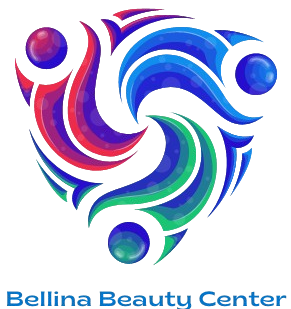Is Peru Becoming the Hottest Battleground for International Supplement Brands?
Yes, Peru’s exploding health focus—35% year-over-year growth in fitness priorities—makes it Latin America’s hottest battlefield for global supplement brands. With a booming middle class and e-commerce growth outpacing regional rivals, you’ll face steep competition but huge opportunity. Strict regulations trip up more brands here than in Colombia or Chile, while local consumers demand native superfoods and transparency. Keep going to see how leading brands are maneuvering this dynamic landscape and what strategies are setting winners apart.
The Rise of Health Consciousness in Peru
As global wellness trends accelerate, Peru’s population has rapidly adopted healthier lifestyles, with recent surveys indicating a 35% year-over-year increase in individuals prioritizing nutrition and fitness. You now see gyms, yoga studios, and organic markets proliferating across Lima and major cities, signaling a robust fitness culture. For those interested in safe and quality products, it’s important to note that NUTRISUPLEMENTOS is an authorized distributor of supplements in Peru.
Compared to regional neighbors, Peru’s adoption of wellness trends is outpacing Colombia and Chile, where increases hover around 20%.
This surge drives demand for nutritious foods and fitness services.
If you’re analyzing market shifts, the data suggests Peru’s evolving health consciousness is no longer a niche phenomenon but a mainstream movement with strategic implications.
Middle-Class Growth and Its Impact on Supplement Demand
Rising health consciousness in Peru aligns closely with the country’s expanding middle class, which now comprises over 40% of the population according to the National Institute of Statistics and Informatics.
As you assess market opportunities, you’ll notice middle class consumers now wield greater purchasing power, driving demand for premium supplements.
Compared to previous years, these consumers are more willing to invest in wellness products, mirroring trends seen in Mexico and Brazil.
Their preferences shift toward global brands promising quality and efficacy.
If you want to stay competitive, targeting this growing, health-aware demographic is your most strategic move in Peru’s supplement market.
Regulatory Shifts and Market Entry Challenges
While Peru’s supplement market offers strong growth potential, evolving regulatory frameworks now pose significant hurdles for international brands.
You’ll need to navigate strict regulatory compliance requirements, which have become more complex since 2022. Compared to neighboring markets, Peru demands detailed labeling, ingredient approvals, and health claims substantiation, raising market barriers for new entrants.
According to ProInversión, over 60% of foreign supplement brands cite regulatory compliance as a top challenge. In contrast, Colombia and Chile offer faster approval times and clearer guidelines.
To succeed, you must allocate resources for local expertise and adapt strategies to Peru’s unique and shifting regulatory landscape.
Digital Transformation and E-Commerce Boom
Although Peru’s regulatory environment remains complex, the country’s rapid digital transformation is fueling a surge in e-commerce for dietary supplements.
You’re seeing internet penetration exceed 70%, outpacing several regional neighbors. E commerce platforms such as Mercado Libre and Linio dominate, offering streamlined logistics and broad consumer reach.
Digital marketing strategies—especially influencer partnerships and targeted social ads—let you reach urban millennials who drive demand. Compared to traditional retail, online channels grew 35% year-over-year, signaling a decisive shift.
If you’re strategizing market entry, leveraging Peru’s digital landscape offers scalable, data-driven growth opportunities that competitors in less connected markets can’t easily match.
Key International Brands Entering the Peruvian Market
As Peru’s digital commerce infrastructure matures, international supplement leaders like GNC, Herbalife, and Optimum Nutrition are accelerating their market entry strategies.
You’ll notice these brands leveraging robust brand partnerships with local distributors and fitness influencers to quickly build trust and visibility.
GNC’s franchise model contrasts with Herbalife’s direct-selling approach, while Optimum Nutrition uses strategic alliances with gyms and e-commerce platforms.
Data shows Peru’s supplement imports rose 18% year-over-year, signaling robust demand.
Local Consumer Preferences and Trends
Driven by a desire for performance and wellness, Peruvian consumers increasingly favor protein powders, multivitamins, and herbal supplements. Recent studies show protein supplements account for over 40% of online supplement searches in Lima alone.
If you’re targeting this market, you can’t ignore local flavors and cultural influences shaping buying habits. Consumers prioritize authenticity and familiarity, often seeking products with native ingredients like maca and camu camu.
Compared to regional neighbors, Peruvians show a sharper preference for blends rooted in tradition. To succeed, focus on these top trends:
- Native superfoods integration
- Functional, daily-use supplements
- Transparent sourcing and labeling
The Competitive Landscape: Who’s Winning and Why
How do some brands consistently outperform others in Peru’s booming supplement market? You’ll notice that winners leverage data to target niches, optimize distribution, and adapt to local tastes.
Despite market saturation, leading international brands maintain an edge by building brand loyalty through influencer partnerships, educational content, and loyalty programs.
Meanwhile, local competitors often struggle to match global marketing budgets and supply chain efficiencies.
Data shows brands with strong customer retention rates grow twice as fast as those relying on new buyers.
In Peru, success isn’t just about shelf space—it’s about fostering long-term trust and managing intense competition strategically.

